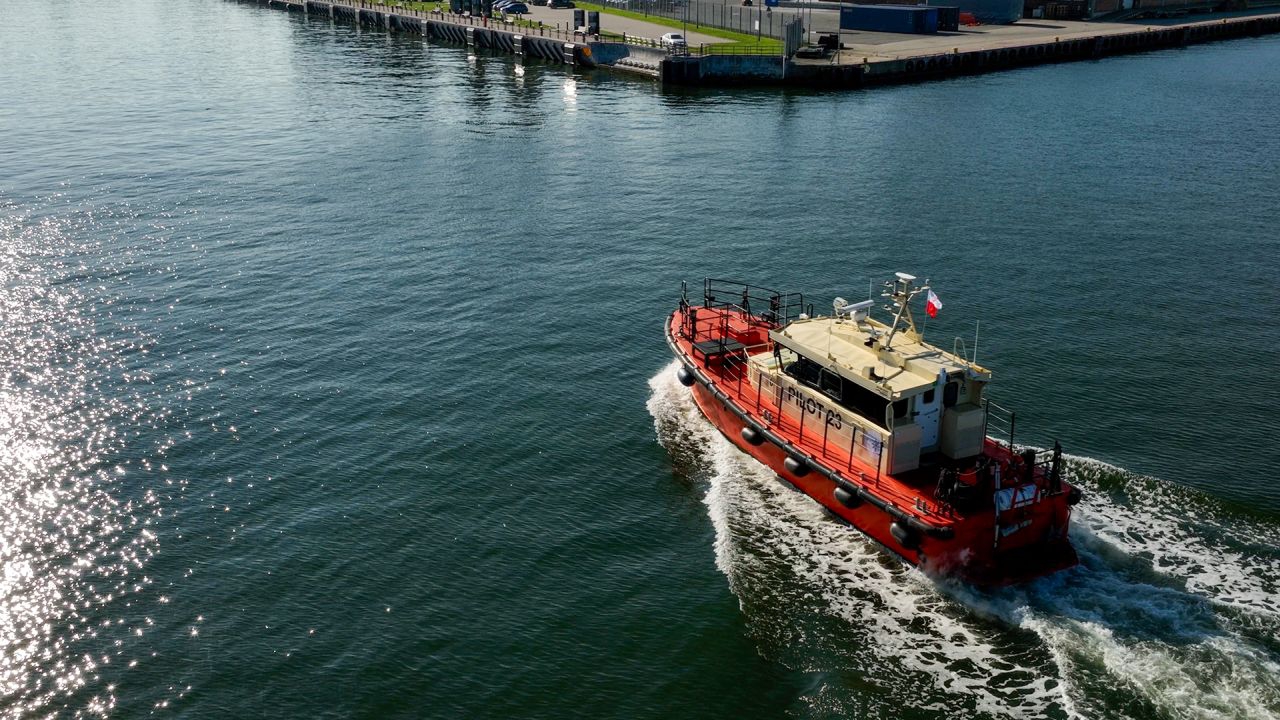![New pilot boats christened at Port of Gdańsk [VIDEO] - MarinePoland.com New pilot boats christened at Port of Gdańsk [VIDEO] - MarinePoland.com](https://www.marinepoland.com/zdjecia/artykul/1656/6529/1200x0/2/pilot.jpg)
Gdańsk-Pilot, which provides pilotage services in the ports of Gdańsk, Elbląg and on the Vistula Lagoon, has officially christened its two newest pilot boats Pilot 23 and Pilot 24.
The Pilot 23 and Pilot 24 pilot boats have been in
service for some time – they were delivered to Gdańsk-Pilot in May
2020 and November 2021, respectively, but so far, due to Covid-19
restrictions, they have not lived to see an official sea baptism
ceremony. This was made up for on Friday, September 30, when both
vessels were ceremoniously christened at one of the quays in the Port
of Gdansk.
The godmother of the Pilot 23 boat
was Marzena Stando, who has run the accounting and office of the
Gdańsk-Pilot company for more than 20 years. The godmother of Pilot
24, on the other hand, was Magdalena Karp, Secretary of the Council
of the National Maritime Section of Seafarers and Fishermen of the
Solidarity Trade Union, of which the maritime pilots have been a part
for more than seven years.

The Pilot 23 and Pilot 24 are twin
boats that were built for Gdańsk-Pilot at Kewatec Shipyards in
Kokkola, Finland. They each measure 16.20 meters in length and 4.60
meters in width, and have a draft of 1.30 meters. As representatives
of Gdańsk-Pilot emphasize, the vessels have been tailored to the
size and needs of a European port and have performed flawlessly since
the beginning of their operation. Thanks to two Caterpillar engines
with 560 horsepower each, the boats can develop a speed of up to 26
knots. The design of the boats ensures self-reversibility in the
event of capsizing.
The task of each boat will be to
deliver pilots aboard ships entering the Port of Gdańsk and to pick
them up and transfer them ashore from outbound ships. Gdańsk-Pilot
also operates a Pilot 22 boat, built at the Tczew River Shipyard in
1991. It is a slightly longer boat, measuring 17.09 meters, but it is
also much slower – it can develop up to 10 knots. Instead, it is
characterized by increased endurance in ice conditions, so it is used
primarily in icy conditions.


